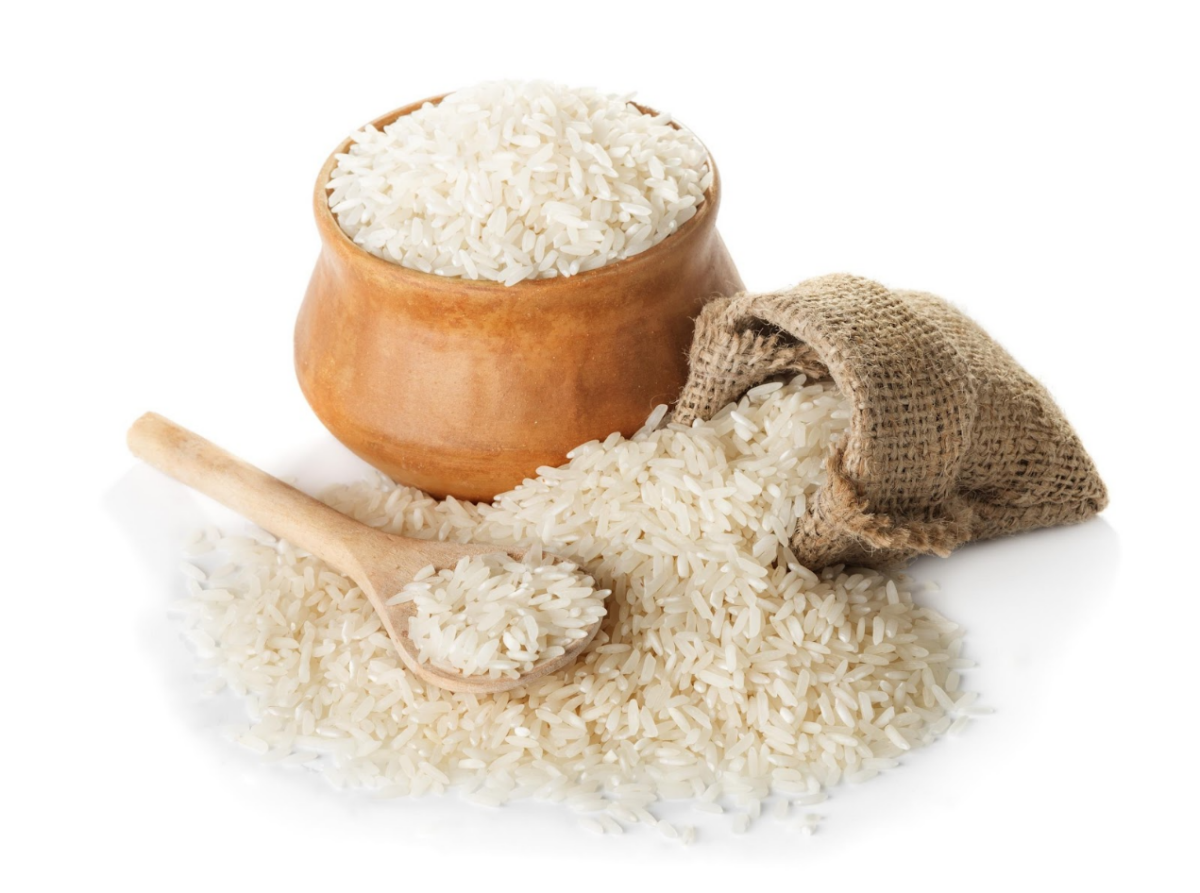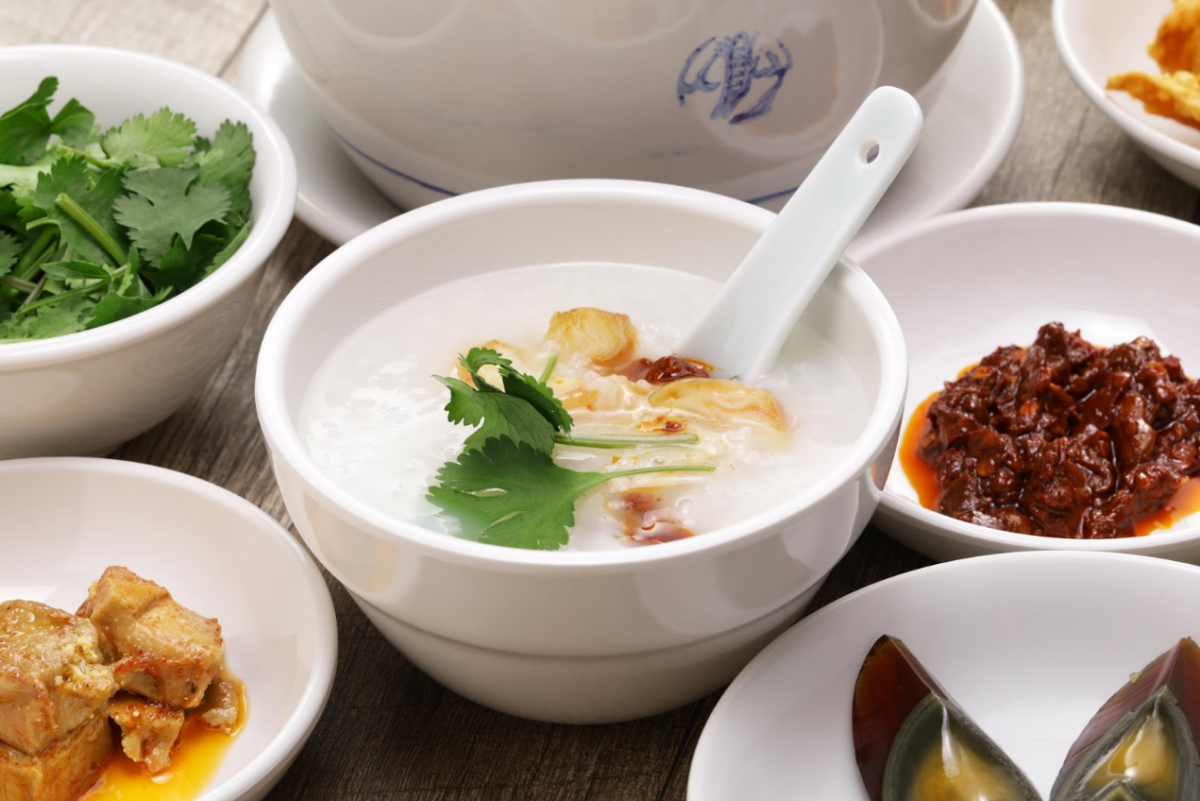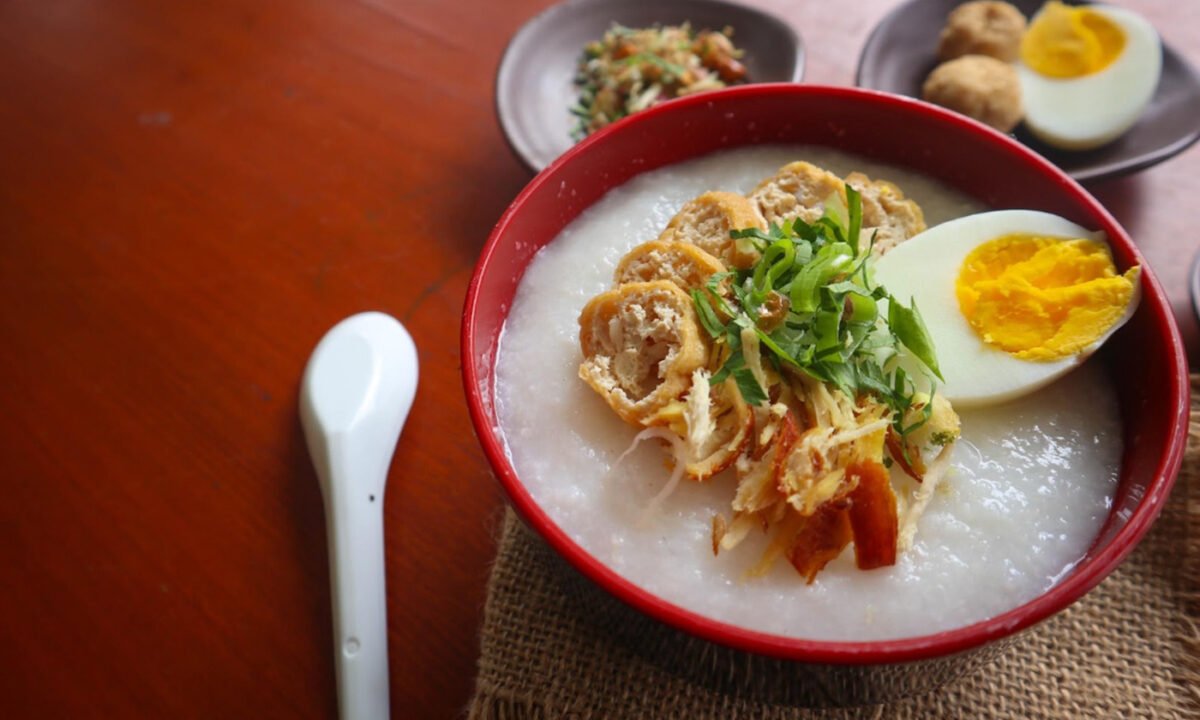White Rice Porridge–‘No. 1 Tonic in the World,’ TCM Physician Offers Best Ways to Prepare
The culture of eating porridge in China can be traced to the ancient past. Since the time of the Yellow Emperor, there have been practices of “grains steamed to make rice and cooked to make porridge.” The ancients often praised porridge and rice as “the most nourishing thing in the world.” Whether it is prepared for recovery from illness, or as part of a daily health care regimen, it is a simple and affordable food to nourish the body.
However, today, some people are hesitant when it comes to eating porridge. They think porridge or white rice is unhealthy—that it contains only starch, lacks nutritional value, and increases blood sugar levels—adding to the risk of developing diabetes.
These are unfounded claims contrary to the ancient correct diet concept. For example, because many diabetics fear that eating white rice will cause a rise in blood sugar levels, they eat brown rice as a staple food—or do not eat rice at all.
As a result of eating brown rice, rather than white, according to Traditional Chinese Medicine (TCM), blood sugar control may worsen, and the body weaken. In TCM, it is believed that long-term consumption of brown rice could cause “qi (vital energy) deficiency and body frailty.”
Eating white rice is important to one’s health. During my past clinical experience, I used to suggest diabetic patients try half white rice and half millet as a staple food and follow the order of eating as: meat→vegetables→rice. In this way, high blood sugar levels could come under control.
Let us revisit our ancestors’ simple diet and health concept of white rice and porridge, and recoup the ancient health wisdom of eating porridge.
5 Grains Is Life Nourishing, Japonica Rice Is the Best
The most used grain for rice porridge is white rice. Though it is often said that white rice was once reserved for only the rich, ancient Chinese medicine literature shows that at least until the era of Zhang Zhongjing in the Han Dynasty, most people had white rice as their staple food—not brown rice.
The “Yellow Emperor’s Canon of Internal Medicine” gives a general summary of the principles of diet and health preservation: “The five grains are key for basic nourishment, the five fruits as support, the five vegetables are as other supplements, and the five livestock for energy supply.” The five grains above refer to rice, millet, beans, wheat, and sorghum.
According to TCM, the five grains are most important to the human body—considered essential to sustain life—and that anyone who deviates from eating them as a staple food will likely encounter health issues.
The “Compendium of Materia Medica” also mentioned: “Nature gives us the five grains, from which human beings can be nourished. Having them you live; without them, death ensues.”
It also said, “Only this grain [japonica rice] acquires the energy of harmony between heaven and earth, as well as the power of nature and its reproduction, so it stands out among all other things.”
Among the five grains, japonica rice is the best because it is neutral in nature, and having acquired the “harmony of heaven and earth,” it is also the most moderate. Whether one is healthy or sick, eating japonica rice can sustain life without any side effects. At the same time, it can neutralize the bias of other foods, making it easy for the body to digest and absorb nutrients from them.
Japonica Rice Is Better Than Indica Rice for Making Porridge
In general, rice can be classified as either soft or hard, and high or low in stickiness. In terms of stickiness, glutinous rice is regarded as high, while japonica rice and indica rice are low.
The types of white rice most commonly consumed are the japonica and indica varieties. In terms of appearance, the grains of japonica rice are round and short—while those of indica rice are slender and long.
In comparing japonica and indica rice, the latter lends a more sustainable feeling of satiety and is thus more popular for daily cooking purposes. Japonica rice, conversely, is more suitable for making porridge—although it can also be used for normal rice cooking as well. In addition, because indica rice has poor viscosity and is harder, people with stomach problems (such as gastric ulcers) should eat less of it, and choose japonica rice as their staple rice.
Those who are physically weak after illness or postpartum are also advised to eat japonica rice porridge to help speed up recovery.
Glutinous rice is sticky and difficult to digest, so children and those who are ill should avoid it. Glutinous rice has the effect of warming the spleen and stomach.
As a folklore treatment of “cold” diarrhea without bacterial infection in the elderly with a weak stomach, the effect of cooking porridge with glutinous rice is found to be excellent. Nocturia (the frequent need to urinate during the night) due to qi deficiency in the elderly can be eliminated by serving porridge with lotus seeds, glutinous rice, and red dates, without the need to take additional medicines.

Nourish Spleen and Stomach, Replenish Body With Japonica Rice Porridge
Japonica rice porridge provides the following nourishment benefits:
- Nourishes the spleen and stomach, invigorates stomach qi.
- Nourishes yin and the internal organs and promotes body fluid.
- Promotes sweating and detoxification.
- Reduces diuresis (excess filtering of fluid by the kidneys) and flatulence.
- Helps other medicines reach their intended efficacy.
Li Shizhen (a famous TCM physician in the Ming dynasty) said that cooking porridge with japonica rice with Gorgon Euryale seeds can benefit energy, strengthen the will, improve hearing and eyesight, cleanse the blood vessels and the five internal organs, and improve the complexion.
Wang Shixiong, a medical scientist in the Qing Dynasty, wrote in “Suixiju Diet Spectrum” that if poor people suffer from deficiency syndrome, they can use the “float” on top of thick rice porridge in place of ginseng soup with often miraculous effects.
Large families often cook porridge in big pots. During its preparation, the surface of the rice porridge rises and rolls and produces a foam layer that later becomes a thick and smooth paste called “rice oil” or “porridge oil.” Skimming this layer of rice oil into a bowl, drinking it directly, or eating it with a little salt, has all the benefits of replenishing body fluid and essence—particularly nourishing for the frail elderly. Whether for an ailing patient or the mother of a newborn, porridge is the best food for recuperation.
Zhang Mu (a great TCM physician in the Qing dynasty), said that if a patient is extremely weak and often vomits after eating—and there has been no success of healing via medicine—such a person can be cured by eating porridge.
Ways to Make Thick Porridge–a Better Option Than Its Thinner Counterpart
Specific skills and techniques are required for making good rice porridge to extract all its true health value. The secret of making porridge is clearly stated in Yuan Mei’s “Suiyuan Food Recipes” in the Qing Dynasty:
“If you see just water but no rice, it is not porridge; if you see rice but no water, it is again not porridge. For it to be considered a porridge the water and rice must be thoroughly harmonious, soft, and greasy as one.”
Rice porridge means “cooking the rice until it is completely melted and becomes fully coagulated as one foam.”
When making porridge, it is advised to use japonica. Rice porridge can be prepared in either an aqueous or a thicker version and each serves a different purpose. To put it simply, thick porridge has a strong tonic effect, and is good for people with severe spleen and stomach deficiency—for those who often feel flatulent in the abdomen, have trouble urinating, or are frail and unable to sweat, it is advised to eat the more aqueous version.
Zhang Mu even called porridge “the number one thing for promoting qi and clearing the intestines, promoting water, and reducing swelling.” He emphasized that “the cure of porridge lies in its heat content.” That means porridge must be eaten while still hot, and never in the cold state, otherwise it can block qi—an adverse effect we want to avoid!
Porridge Cooking Skills
When preparing porridge, it is best to add enough water at a time and monitor the ratio of water to rice. Never add water during the interim, otherwise, the porridge will become thinner, thereby reducing its homogeneity and rich flavor.
Thick porridge ingredients:
- Water: 20 cups
- Rice: 1 cup
Preparation:
Mix the ingredients, simmer for two hours, and serve.
Applicable symptoms:
People with severe spleen and stomach deficiency.
Thin porridge ingredients:
- Water: 30 cups
- Rice: 1 cup
Preparation:
Mix the ingredients and simmer for two hours, and serve.
Applicable symptoms:
People who often feel flatulent in the abdomen, have trouble urinating, or are frail and unable to sweat.
Note: When cooking porridge, you can use casserole pots, ceramic pots, stainless steel pots, electric pots, or pressure cookers. However, it is recommended to use a casserole pot to prepare porridge as it can preserve the heat for more continuous and even cooking so that the porridge maintains its fragrance and stickiness.
It is best if the porridge can be boiled for two hours. In this way, the rice grains can be completely melted and turned into a good paste.

Porridge Taboo: Undercooking
In general, people with stomach and intestinal ailments complain of flatulence and gastroesophageal reflux after eating porridge. This would be because the porridge was not cooked correctly—specifically, it had not been boiled until it melts and turns pasty.
When porridge is boiled into a fully melted state—with the rice grains completely broken down—the digestion and absorption by the spleen and stomach should be satisfactory.
For people with high blood sugar levels who want to eat porridge, cook the porridge until it is fully melted, and only consume the “rice oil” on the upper layer and avoid the “rice residue” below. After eating, measure the blood sugar level for peace of mind.
Past clinical observation indicates that after eating rice porridge, some people’s blood sugar levels drop and come under control, while others have a rise in blood sugar levels. This means that eating rice porridge is dependent on individual constitutions. It is best for each individual to monitor blood sugar levels to determine whether eating porridge is appropriate for them. Above all, one must prepare the porridge according to the ancient method mentioned earlier.




